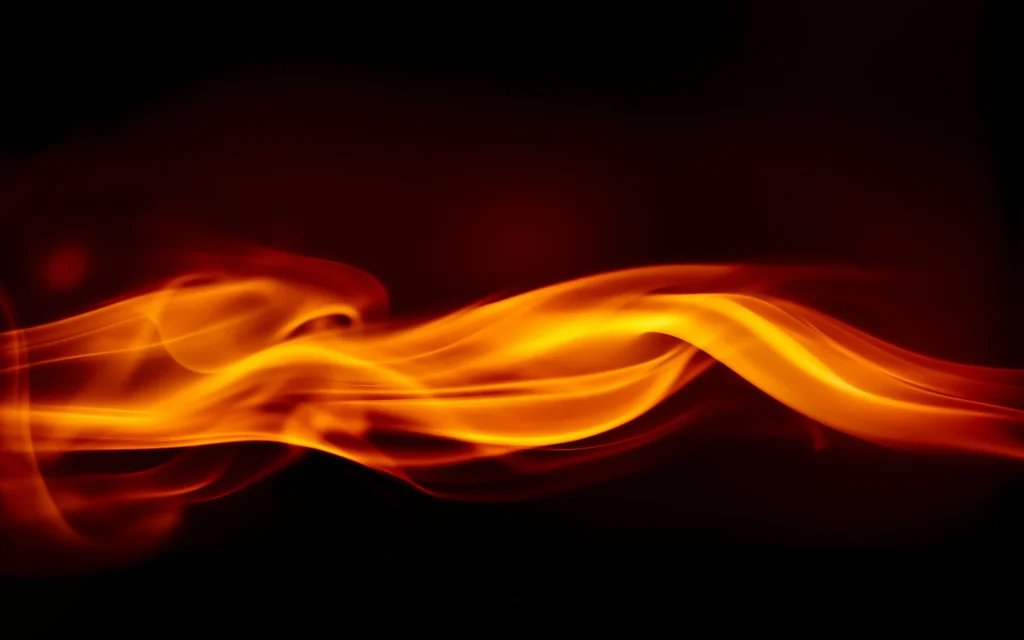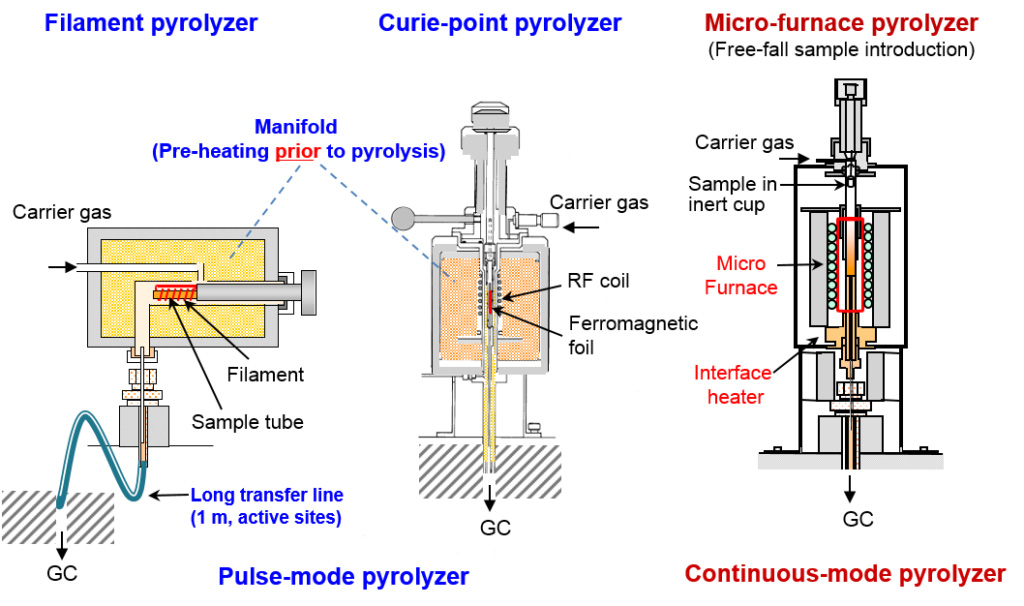
Did you know there are different types of pyrolyzers?
In fact, there are three different types of pyrolyzers that are commercially available:
Important to note, flash pyrolysis can be done by all types of pyrolyzers. But there are some significant differences between these different types of pyrolyzers that should be understood.
The pyrolysis temperature cannot be tuned continuously by a Curie-point pyrolyzer, and it cannot be applicable, in principle, to the evolved gas analysis (EGA). Analysis of volatile and semi-volatile compounds in a sample cannot be done by a filament pyrolyzer. This is because it requires pre-heating of a sample before pyrolysis to avoid condensation of pyrolyzates with a high-boiling point.
Both flash pyrolysis and EGA can be done effectively by a temperature-programmable micro-furnace pyrolyzer. Because a micro-furnace is directly connected to the GC without any dead volume and cold spots, and cryo-trap is not always necessary in the daily analysis.
To better understand the different types of pyrolyzers, practical specifications of these pyrolyzers are given below. Here is a great video to explain the key differences.

Filament Type Pyrolyzer
The first type of pyrolyzer we’ll cover is the Filament Type Pyrolyzer. Filament type pyrolyzers heat a sample tube with a filament.
The first issue experienced with filament pyrolyzers is their non-uniform heating. This leads to poor temperature accuracy and poor reproducibility. Sample placement and heat-transfer variations affect the temperature of the sample (depending on where the sample sits in relation to platinum wire coils and on sample contact). The filament temperature is estimated from the electrical properties of the wire – but the temperature of the sample is not actually measured as it changes over time. The sample must be pre-heated prior to the analysis in the heating manifold to avoid the condensation of pyrolyzates with a high boiling point.
And herein lies the problem: this preheating step causes denaturation, degradation, and thermosetting of samples and evaporation of volatile and semi-volatile compounds in samples.
Some filament pyrolysis systems also use a 2-step pyrolysis process in which some of the pyrolyzates are first collected off-line on a focusing trap. Then, the switching valve sequentially sends the pyrolyzates from the focusing trap into the GC/MS. The pyrolysis indirectly places the pyrolyzates on the GC column in a two-step and non-continuous process. Polar and heavy compounds stick irreversibly in the focusing trap, but are not removed for analysis similar to a cold spot.
Fig. 2 Thermal Profile of a Filament Pyrolyzer

Curie-Point Pyrolyzer
Next, let’s look at the Curie-point pyrolyzer. Curie-point pyrolysis systems can have a high heating temperature accuracy. however, the heating temperature depends on the alloy composition of the sample foil. This makes it impossible to continuously raise the heating temperature of the Curie-point pyrolyzer to allow for the EGA techniques. The pre-heating of the heater manifold is necessary, similar to the filament pyrolyzer.
Herein lies the problem: Depending on how the sample is wrapped with the alloy foil, results can vary which leads to poor reproducibility.
Despite the power of modern analytical instruments techniques of analysis such as gas chromatography and mass spectrometry one of the most important challenges remains that of sample preparation – especially far non-volatile, insoluble materials and chemicals. Sample preparation can require a lot of time and expertise particularly when dealing with small sample amounts.
Fig. 3 Thermal Profile of a Micro-Furnace Pyrolyzer

Micro-Furnace Pyrolyzer
And finally, we have the Micro-furnace pyrolyzer. Micro-furnace design allows a full range EGA to obtain a thermal profile of an unknown sample for light compounds, volatiles, and additives as well as oligomers, heavy, and polymeric compounds. The EGA experiments can be performed from 40 °C to maximum temperature (1050 °C) and correlate results to well-established TGA techniques throughout the entire temperature range of the experiment.
This Micro-furnace pyrolyzer capability is critical for evaluation of unknown samples.
This technology directly deposits all pyrolyzates on-column in a single step process for a continuous-mode analysis. A sample is placed in an inert deactivated cup held at the ambient temperature in helium and is not subjected to heat prior to the analysis. The micro-furnace is preheated to the desired temperature. The temperature is precisely measured with a thermal couple sensor near the sample. The sample cup then drops into the quartz pyrolysis tube, where the sample is quickly and reproducibly pyrolyzed. The pyrolyzates are continuously swept onto the GC analytical column for separation and detection by MS or any other detector.
The continuous-mode process of the micro-furnace allows low and high molecular-weight, as well as polar compounds to be detected and analyzed. Absence of any transfer line is also critical in the ability of this device to detect heavy and polar pyrolyzates and additives.
Micro-furnace technology guarantees reproducibility and accuracy of the temperature with ±0.1 °C. Every facet of the system is designed to ensure reliability and data quality. All wetted surfaces are quartz or temperature stable deactivated. There is no transfer line with cold spots and no cross contamination.
What sets Frontier Pyrolyzers apart from different types of pyrolyzers?
The Frontier EGA/PY-3030D Multi-Shot Pyrolyzer is a sophisticated and powerful instrument based on a micro-furnace design. It features high performance and ease of use, from the heating furnace to the control software. The Frontier EGA/PY-3030D is a versatile multi-shot pyrolyzer that offers temperature programmability from ambient (+10 ᵒC) to 1050 ᵒC with precise temperature control (+/- 0.1 ᵒC) of the ceramic micro furnace. Users can analyze materials using a variety of techniques for greater flexibility.
It is important to note that based on actual bond energy strengths in polymers and materials, all organic materials will pyrolyze prior to a temperature of approximately 700 °C. The only reason to set an initial pyrolysis temperature in excess of 700 °C is because the actual sample temperature in the pyrolyzer is not accurate.
Its important to be wary of any literature indicating pyrolysis at 1,200 or 1,300 °C is either unnecessary, over pyrolysis, or indicates poor actual sample temperature control in the particular pyrolysis device.
Learn more about the Frontier micro-furnace pyrolyzer and request pricing information.
References:
Flexible financing, technical services, and refurbished instruments.
Everything you need to advance your lab’s success – all in one place.
8301 New Trails Drive, Suite 100, The Woodlands, Texas 77381
Complete this form below to sign up and we will reach out to you with instructions
